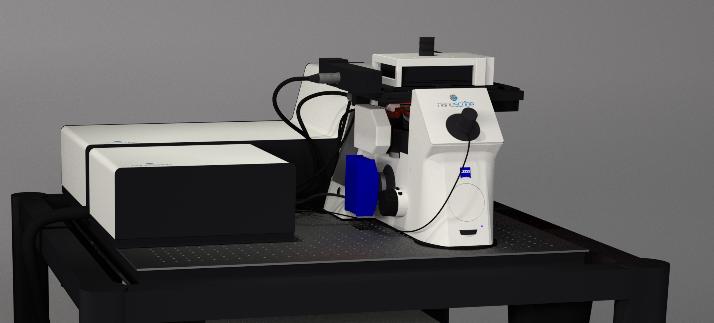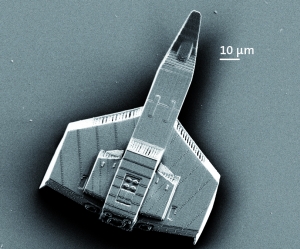Nanoscribe builds world’s fastest microscopic 3D printer

World’s fastest 3D printer of micro- and nanostructures was revealed during recently held international fair for photonics, Photonics West. Capable of manufacturing three-dimensional objects at micro-scale, it retains maximum resolution and consumes minimum time. This ingenious 3D printer deploys novel laser lithography method in order to achieve such efficacy.
The new laser lithography method increases printing speed by 100 times. This method uses galvo mirror system, the same technology as used in laser show devices or scanning units of CD and DVD drives, wherein rapid and precise focus positioning is achieved by reflecting a laser beam off the rotating galvo meters. Martin Hermatschweiler, the managing director of Nanoscribe GmbH said,
“We are revolutionizing 3D printing on the micrometer scale. Precision and speed are achieved by the industrially established galvo technology. Our product benefits from more than one decade of experience in photonics, the key technology of the 21st century.”
This 3D printing method uses direct laser writing technique, which is based on two-photon polymerization. It uses ultra-short laser pulses to polymerize photosensitive materials in the laser focus, just like paper ignites when exposed to sunlight focused through a magnifying glass. Depending on the photosensitive material chosen, the exposed or unexposed volume only is dissolved. After a developer bath, these written areas remain as self-supporting micro- and nanostructures.
By means of the galvo technology, three-dimensional micro- and nanostructures can be printed rapidly and, hence, on large areas in principle. At highest resolution, however, the scanning field is limited physically to a few 100 µm due to the optical properties of the focusing objective. Just as floor tiles must be joined precisely, the respective scanning fields have to be connected seamlessly and accurately. By the so-called stitching, areas can be extended nearly arbitrarily.
 Hellcat on the microscale, fabricated with a Photonic Professional system. Printing a miniaturized object like a spaceship model is reduced to less than one minute without loss of quality (Credits: Nanoscribe)
Hellcat on the microscale, fabricated with a Photonic Professional system. Printing a miniaturized object like a spaceship model is reduced to less than one minute without loss of quality (Credits: Nanoscribe)
This 3D printer is developed by Karlsruhe Institute of Technology’s (KIT) first spin-off, Nanoscribe GmbH. 3D laser lithography systems developed by nanoscribe are used by scientists worldwide. Photonics research concentrates on replacing conventional electronics by optical circuits of higher performance. For this purpose, Nanoscribe systems are used to print polymer waveguides reaching data transfer rates of more than 5 terabits per second.
Earlier this week, we talked about 3D printing, an innovative technology with numerous practical applications and ongoing patent clashes.
Source: Karlsruhe Institute of Technology
Featured image: Nanoscribe

Now we know where the water went on Mars. The World really needs someone in charge of protecting our atmosphere-and denying the manufacture of anything that tampers with it. Stuff like this shouldn’t be allowed unless there is a counter inventive, ie; puts water back in the atmosphere simultaneously
I truly believe you can witness the exponential increase in technology and the abilities it brings on a daily basis now. The Singularity will be here much sooner than predicted I believe, dare I say, HOPE.